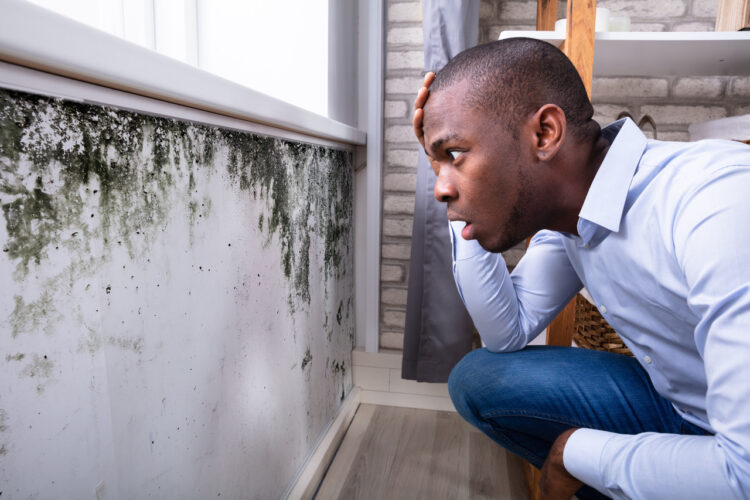
- In Mold Removal
6 Common Signs That You Might Have Mold in Your Home
Often times you can’t see Mold that might be growing in your home. Although some Molds are actually beneficial to you, living with and breathing in Mold spores in your home is not good for you or your family’s health. Many people don’t even know they have it because it can be difficult to see or find.
Here are a few indicators that you might have a Mold problem in your home:
Musty Smell
Mold emits spores into the air and those spores give off gases that often have a musty odour. This is a tell-tale sign that there might be Mold in your home. Typically you will find this in basements or bathrooms. But don’t be fooled. Just because you don’t smell anything, it doesn’t mean that Mold is not present as it does not always emit a detectable odour.
Discolouration on Walls or Ceiling
Mold will grow where there is moisture and organic material to feed off of. Typically it will start on the back of gypsum board (drywall) in your wall or ceiling. This may be caused by a plumbing leak or a leak in the ceiling or attic. As Mold continues to grow it works its way through the material and you will see it on the side visible to you.
Respiratory Issues
If you have noticed that you have unusual asthma or allergy flareups, it could be caused by Mold. Mold emits mycotoxins which aggravate your respiratory system. If you find that you are having breathing issues or persistent cough or sneezing with no other ailment, you might want to investigate further. There are certain medical professionals who can also do urine tests to see if you have elevated levels of mold in your system.
Discoloured Bathroom Grout or Caulking
Your bathroom is another place that is notorious for Mold growth. If you’ve had a small leak in your shower for example, that moisture could be building up behind the walls. Eventually, you will notice discolouration in the grout between the tiles or the caulking at the tub edge. If the discolouration is in the caulking, it may be just from standing water on the tub sill, or it could be from within the walls.
Spots on Furniture or Carpets
Mold can grow in or on your furniture and carpets if it has had exposure to water or wet substances. You might see small spots on the fabric which could be an indicator of Mold lurking below the surface. Mold typically grows on carpet backing and under padding as a result of a flood or a leak that was not properly dried out.
Dirty Looking Window Sills
Rain and moisture can cause Mold to grow on the inside of your window sills. If you are continuously wiping off “dirt” that keeps coming back, it might be Mold. Homes with high levels of humidity might have condensation in the windows which can lead to Mold growth.
Get a Mold Inspection by MoldCare
Different species of Mold are different colours, not all Mold is black in colour, but Mold inside of your home is not something that you want to live with. If it is a minor issue, often you can rectify the problem yourself with little investment. If you have a more serious level of Mold in your home, you should call a Professional who specializes in Mold Remediation and ask for a quote and advice. An expert will be able to detect moisture levels on surfaces that could indicate a Mold problem which you cannot see. Air sample tests can also be conducted by a Professional Mold Remediation company who will send them to a laboratory where they will analyze the type of Mold present and the quantity of Mold spores present. Whether you hire a Professional or do it yourself, you need to take action against Mold. Mold will continue to grow and cause more harm than good as long as it has a source of food and water. You also should find out why the Mold is there and what you can do to ensure that after you have it removed, it won’t come back.





